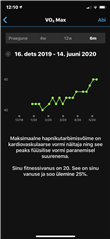Hiking/Rowing/walking - are these activities included in Workout Load. I really hope so as hiking is my nr 1 Activity.
It seems to me only cykling and running is included, wich i also do. Maybe i need to chose "run" as Activity when i walk/run in the woods instead of hiking?



